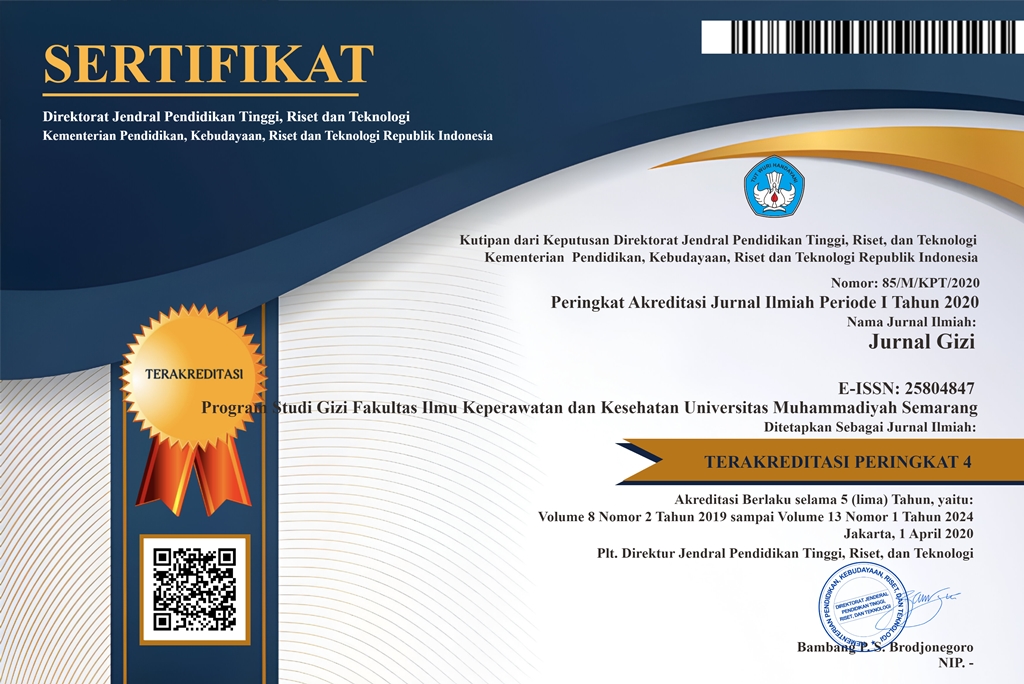Hubungan Asupan Kalsium dan Natrium Terhadap Tekanan Darah Sistolik Pada Penderita Hipertensi Rawat Inap Di RS Tugurejo Semarang
(1)
(2)
(3)
(*) Corresponding Author
Abstract
Blood pressure is the pressure generated in the artery wall. Peak pressure occurs when the left ventricle contracts and is called the systolic pressure. Diastolic pressure is the lowest pressure that occurs when the heart is resting. Blood pressure is usually described as the ratio of systolic to diastolic pressure, with normal adult values ranged from 100/60 to 140/90. The average normal blood pressure is usually 120/80.
This type of research is descriptive analytic clinical nutrition field. The method is survey with a cross-sectional approach. The Number of samples are 30 people consisting of hospital inpatients Tugurejo Semarang. The Research was done at January to July 2013.. We used interview with aids food recall for collecting data. The rank-Spearman test was done to test the correlation between calcium and sodium intake with sistolik blood pressure. To test the normality of data, especially the data of calcium sodium intake and blood pressure, we used Kolmogorov- Smirnov test.
The results showed that the majority of hypertensive patients were female (17 persons or 56.7%). 12 patients (40,0 %) were 51-60 years old and the largest of sample (13 person or 43.3 %) work as the housewives. The majority of patient’s education is primary school (16 people or 53.3%). 13 patients (46,7%) were mild systolic hypertension or lights hypertension and only 2 patients (6,7%) were severe hypertension. There are 3 patient (10,0%) that they have the calcium intake is more than the normal. There are 5 patients (16,7%) that they have the sodium intake is more than the normal. Statistical test results showed there is no correlation between calcium intake and blood pressure (p value 0.046 <0.05). There is a correlation between sodium intake and blood pressure (p value 0.000 <0.05).Full Text:
PDFArticle Metrics
Abstract view : 5116 timesPDF - 3363 times
DOI: https://doi.org/10.26714/jg.3.1.2014.%25p
Refbacks
- There are currently no refbacks.
Diterbitkan oleh: Program Studi Gizi (D3 dan S1)
Fakultas Ilmu Keperawatan dan Kesehatan
Universitas Muhammadiyah Semarang
Sekretariat: Jl. Kedungmundu Raya No. 18 Semarang
Contact Person : Hapsari Sulistya Kusuma, S.Gz, M.Si (+62 85 6 41 536 553)

This work is licensed under a Creative Commons Attribution 4.0 International License.









.png)
.png)